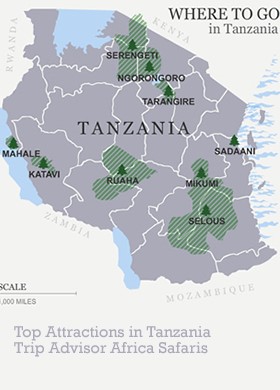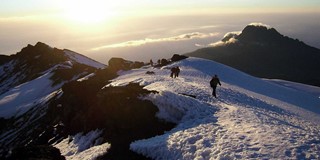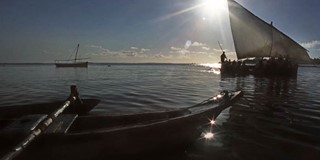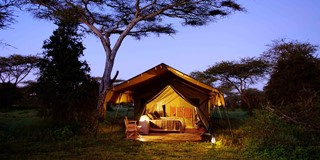
Serengeti National Park
Speak to our tour consultants for a more custom made itinerary to suit your travel needs.
Tel: +254 706 124 625

- Background Information
- Game Viewing & Activities
With 14,700 square kilometers, this is Tanzania’s largest park, a symbol of African wildlife and primeval beauty; it contains a million and a half plains’ game, the greatest and most spectacular concentration of animals anywhere in the world. It is not unusual to see 40 or more lions in a day’s game viewing. The bulk of the area consists of vast open plains with lofty rocky outcrops. Also found are acacia and savannah woodland and scrub; forested and mature treed rivers; an occasional swamp and small lake. The park ranges in altitude from 910 meters up to 1,820 meters. Unrivalled photographic opportunities exist when the great animal migration is on. There is a wealth of bird life in the area where the larger species of birds of prey, game birds and water fowl are well represented. Here also a unique historical find revealed a settlement site of people dating from 1000 to 100 B.C.
Serengeti National Park is one of the best-known wildlife sanctuary in the world, and symbolises the classic African safari. With more than 2 million wildebeest, half a million Thomson’s gazelle, and a quarter of a million zebra, it has the greatest concentration of plains game in Africa. The Serengeti is also synonymous with the annual wildebeest and zebra migration.
Although outnumbered eight to one, the zebra join in the migration, maintaining their family units of about a dozen members, each with a dominant stallion. Lion, cheetah, hyena and hunting dog follow the wildebeest and zebra, making sure that only the fittest survive. In November, when the grazing is finished in the North, this army of animals surges back to the now green pastures of the south, where they calve and mate before starting the entire cycle again.Normally, the best time to see the animals here is during January and February. Heading north into the Park, the grass becomes noticeably longer, and it is usual to see Grant’s and Thomson’s gazelles, as well as the occasional small groups of topi and kongoni. Out of the vast sea of grass also rise great granite outcrops, known as ‘kopjes’, which have their own range of vegetation and wildlife. Towards Seronera, the Park headquarters, the landscape becomes more varied. Hills rise out of plains criss-crossed by small rivers. Umbrella acacia trees appear, elegant and serene, contrasting with the twisted commiphora trees.
::: Select Recommended Tours :::
-

Kilimanjaro Climb - 5Days Marangu
The Marangu route is one of the most popular routes to the summit of your Kilimanjaro Climb.
-

Zanzibar Luxury Beach Tour
Explore Zanzibar Beaches in style with exclusive access to top 5star properties in Zanzibar.
-

Kenya & Tanzania Adventure
Combine two of the best top Wildlife and Safari Destinations in East Africa - Kenya & Tanzania..